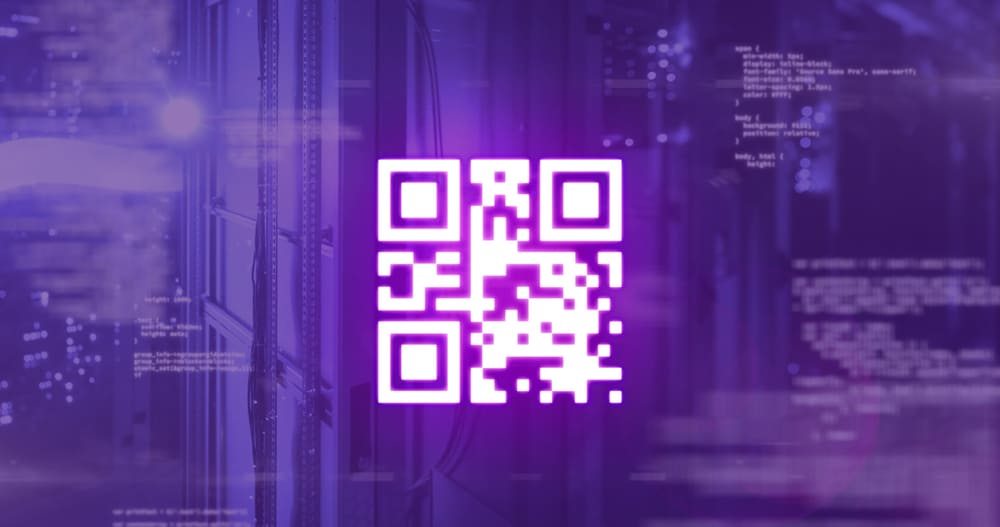QR Code Safety And Use

QR codes are everywhere these days.
They’re used to sharing information, paying bills, or even shopping online. QR codes have evolved, and now they’re being used for other purposes such as tracking inventory, providing customer service, promoting events, and parking management. In addition, QR codes can also be used to provide information about a company or an organization.
A QR Code is a bar code that can be read easily. It stores information in a square-shaped grid—QR code contains data, including phone numbers, URLs, text messages, etc. The data is encoded into the image, allowing it to be scanned using a smartphone camera or any scanner.
QR codes are convenient because they allow us to access information without typing out long strings of characters quickly. But they can also pose some risks. For example, hackers can scan them and steal personal information from unsuspecting users.
A standard barcode can only hold about 40 characters. A QR code can hold up to 65,000 characters!
A QR code is a square barcode that contains information about a web page URL, contact number, or other pieces of data. You can use QR codes to link directly to a webpage, authenticate your account, access Wi-Fi, pay on parking meters, and store encryption keys.
How do QR codes work?
The pattern in a QR code represents binary code. A QR reader can identify a standard QR code by identifying the three large squares outside. Once the reader identifies these three squares, it knows everything is a binary code inside the square.
A QR code is a square pattern made up of numbers and letters. The QR reader breaks it into a grid and then looks at the individual grid square and assigns a number to each one based on whether it is white or black. Then it groups the squares to make more significant patterns.
QR codes can be used to share information with others, pay bills, access Wi-Fi, track inventory, provide customer service, promote an event, park cars, and pay for parking tickets. Once all the squares have been assigned a value, the reader can interpret the entire pattern. This interpretation reveals the message contained in the code. Once all the squares have been given a value, the reader can interpret the whole pattern. This interpretation reveals the message contained in the code.
What should I know before using a QR code?
Before using a QR code, you need to understand how it works. Here are some things to keep in mind when using QR codes.
- Be careful who scans your QR code. Hackers can take over someone else’s device and use it to scan your code.
- Don’t give out sensitive information through a QR code. Your personal information could end up in the wrong hands if you post it on social media sites.
- Never share your password through a QR code. Hackers could use this information to gain unauthorized access to your accounts.
- Always check the URL associated with a QR code before clicking on it. Make sure it matches what you expected.
- Keep in mind that not everyone has a QR scanner. If you want to send information to people who don’t have a QR reader, you will need to find another way to get their attention.
- Use a QR code sparingly. It takes time to generate a QR code, so avoid generating too many.
Are QR codes safe?
QR codes are an efficient, user-friendly, and secure way to transact business when used correctly. However, there are still many ways that people could misuse this technology. Hackers could take advantage of the fact that a QR code has no security measures. This makes it vulnerable to attack.
To answer the question, QR codes are safe as long as customers, organizations, and parking operators use them cautiously.
Yes, QR codes are very secure. However, there are still ways to hack them. Hackers can even create fake QR codes that look like real ones. If you receive a suspicious-looking QR code, don’t click on it. Instead, report it to your local police department so they can investigate further.
There are various types of phishing schemes on the internet now. There are even ones that concern our parking meters. This scam targets people trying to pay for their parking tickets using the Quick Response service (QR code).
Scammers are now replacing the QR codes on parking meters with their QR codes, redirecting people to different pay portals when scanned.
How to increase QR code security?
Although QR codes are a safe and secure way to pay for your parking, QR codes provide a quick and seamless transaction process. But it would be best if you were cautious when using QR Codes. Always check out the website or source before scanning codes. Never scan codes from unknown sources.
Here are a few things you can do to avoid getting scammed;
- Check the URL first: Before scanning a QR code, always check its URL first. If the URL does not match what you expect, don’t scan it. And if scanning a code redirects you to a website, check if the website is unintelligible. Does it start with HTTP or HTTPS? The difference between these two is that the extra little “s” is only used by secure and encrypted websites such as government, bank, business websites, etc. So, as a customer, you should always be on the lookout for it.
- Never enter any personal information: When paying for parking, never enter any personal information. Do not include credit card details, phone numbers, addresses, email addresses, or other personal information.
- Use a trusted app: When paying for parking, always use a trusted app like Google Pay or Apple Pay. These apps will ensure that you are making payments safely.
- Don’t click links: Avoid clicking links within a QR code. Instead, open the link in a new tab to see where it leads.
- Be wary of scams: Scams often target people looking to pay for parking. So be careful if someone approaches you asking for help with payment.
- Look for signs of fraud: If something doesn’t seem right, trust your instincts.
- Report suspicious activity: If you notice any suspicious activities related to QR codes, report it immediately to your local police department.
How to Implement QR Codes Safely in Parking Processes
Recently, there has been a lot of discussion about integrating QR code technology into the parking experience. QR codes can be integrated into many aspects of parking technology, from parking garage access to parking meter payments.
However, as parking operators keep adopting this method, the adoption rate increases, and so do the chances of scammers looking for loopholes in the business process involving QR technology.
As parking technology becomes more sophisticated day by day, the responsibility to protect customers grows. To prevent potential issues arising from the implementation of QR codes, here are a few best practices to follow:
- Keep your QR codes simple: The more complex the code, the harder it is to read. Complex codes also tend to be less legible for the QR reader.
- Create unique codes: A unique code helps prevent fraud by preventing anyone else from scanning the same code twice.
- Display clear instructions: You should display instructions about using your parking meter. For example, you may include a list of steps to enter a code.
- Provide a toll-free number: This will allow users to report problems directly to you.
- Verify your code: Before allowing a user to scan a code, verify that the code belongs to your company.
- Offer multiple payment options: As a parking operator, you need to offer several payment methods. Some customers might want to use their credit cards, while others want to pay in cash. Make sure you provide different ways and offer your customer to use the one that’s best for them.
- Monitor suspicious activity: It is essential to monitor suspicious activity in your parking system. Suspicious activity includes attempts to log into your systems without authorization, unusual transactions, and attempts to access restricted areas.
- Maintenance and In-field Audits: Parking operators must perform regular maintenance and field audits to ensure that their machines are working correctly. Regularly checking your parking lot equipment ensures that they are functioning well and that any issues can be identified quickly.
Conclusion
QR codes are a potent tool for marketers and businesses alike. They’re inexpensive, easy to use, and effective. While they are convenient and valuable, they can also be dangerous.
However, they can be dangerous if misused. Ensure you always check out where you’re getting your codes from and how you plan to use them. Users should also be aware of these risks and take precautions. By following these guidelines, you can stay safe while still enjoying the benefits of using this technology.


